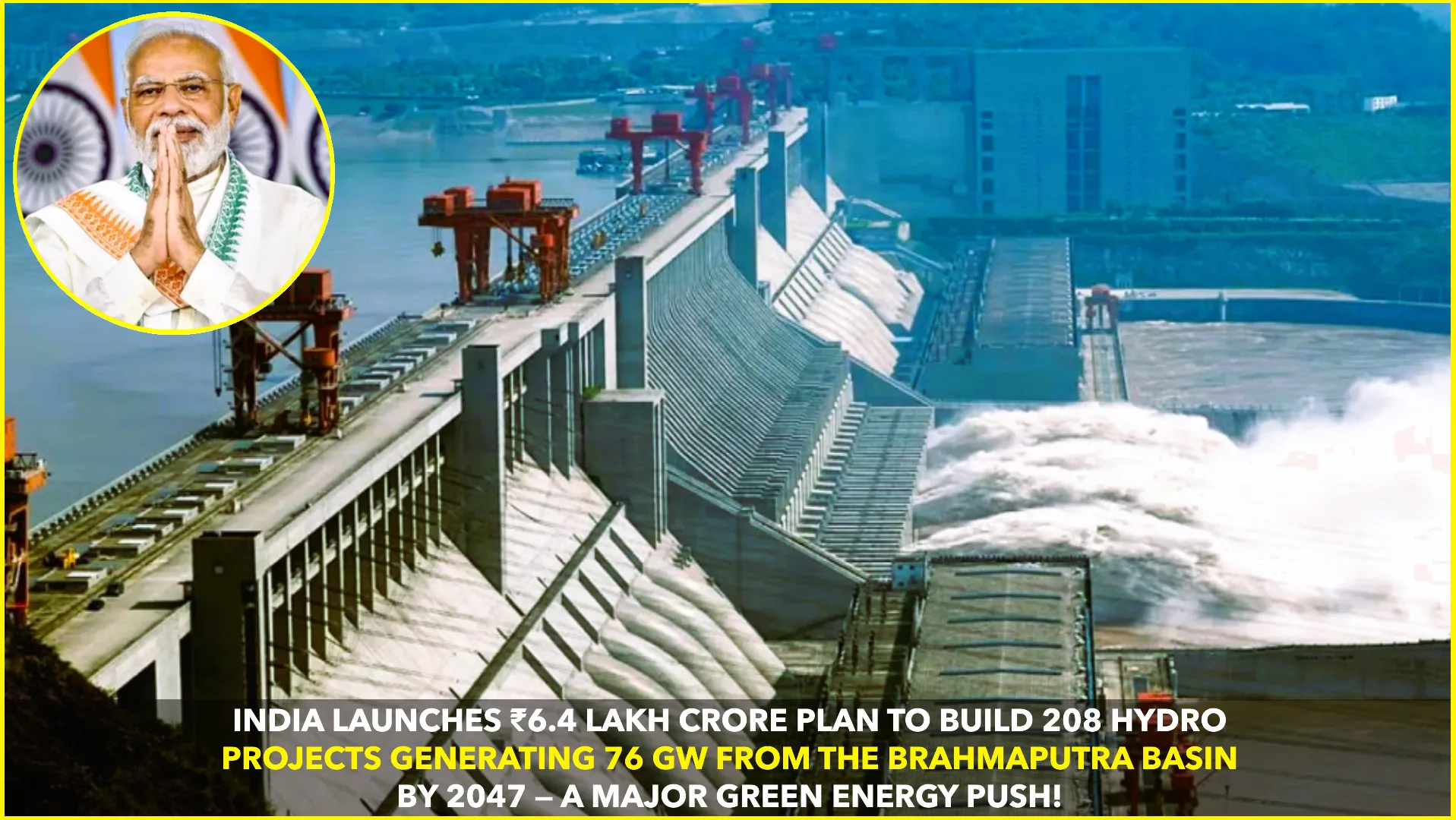India has announced a historic plan to unlock the hydroelectric potential of the Brahmaputra River Basin, marking one of the world’s most ambitious clean-energy projects. The Central Electricity Authority (CEA) has outlined a roadmap to develop 208 hydroelectric and pumped storage projects with a total capacity of 76 gigawatts (GW) by 2047.
The initiative, estimated at ₹6.4 lakh crore (about $77 billion), aims to strengthen energy security, boost renewable generation, and enhance power connectivity from India’s Northeast to the rest of the country. (Source: Reuters)
Two-Phase Implementation
According to the CEA’s master plan, the project will be executed in two major phases.
- Phase I (till 2035): Estimated cost of ₹1.91 lakh crore, focusing on initial hydro installations and regional power evacuation.
- Phase II (2035–2047): Investment of around ₹4.52 lakh crore to expand pumped storage systems, inter-state transmission corridors, and grid balancing infrastructure.
Together, these phases will transform the Northeast into a power-exporting region, capable of supplying clean energy to high-demand states across India. (Source: NDTV)
Why It Matters
This hydro expansion isn’t just about electricity — it’s about strategic, environmental, and regional development goals.
- Clean Energy Transition:
India has pledged to reach 500 GW of non-fossil capacity by 2030. With 76 GW from hydropower, this plan will play a key role in reducing carbon emissions and stabilizing renewable supply when solar and wind fluctuate. - Northeast Development:
Over 80% of India’s untapped hydropower potential lies in the Brahmaputra basin, particularly in Arunachal Pradesh. Harnessing it can spur job creation, improve infrastructure, and attract private investment. - Strategic Imperative:
The Brahmaputra originates in Tibet, where China has been developing upstream hydropower projects. India’s move ensures greater control and utilization of downstream water resources, reinforcing both energy and water security. (Source: Water Power Magazine)
Infrastructure & Transmission Plans
The CEA’s roadmap includes high-voltage transmission networks and pumped storage facilities to stabilize grid performance. More than 64.9 GW will come from conventional hydropower, while about 11.1 GW will be from pumped storage systems designed to store surplus power and release it during peak demand.
The plan will require thousands of kilometres of high-voltage direct current (HVDC) transmission lines, ensuring efficient evacuation of electricity from the hilly terrain of the Northeast to central and western India. (Source: Industrial Info Resources)
Environmental and Social Factors
While the plan is visionary, it faces challenges. The Brahmaputra basin is an ecologically sensitive region, home to diverse flora, fauna, and tribal communities. Large-scale hydropower projects can disrupt local ecosystems, affect river flow, and lead to displacement if not carefully managed.
To address this, the government plans to introduce stringent environmental safeguards, ensure local community participation, and create compensation frameworks for affected populations. Sustainable construction and biodiversity protection are expected to be central to the project’s design. (Source: NDTV)
Regional and National Impact
For India, the Brahmaputra hydro push is a strategic and environmental milestone. The 76 GW capacity will significantly reduce dependence on fossil fuels and provide clean, dispatchable power for decades. It also enhances grid stability, vital for integrating solar and wind power into the national grid.
For the Northeast, it could usher in a new era of prosperity — improved road and power infrastructure, employment opportunities, and industrial development. As connectivity strengthens, the region could evolve from a remote frontier into an energy hub.
(Source: Reuters)
The Road Ahead
The success of this plan depends on efficient project execution, faster clearances, transparent environmental assessments, and robust financing models. If the roadmap proceeds as intended, by 2047 the Northeast could emerge as the “powerhouse of India”, exporting clean electricity nationwide.
India’s Big Hydro Push symbolizes a powerful mix of ambition, sustainability, and regional empowerment — a step toward a greener, stronger, and more self-reliant energy future.










